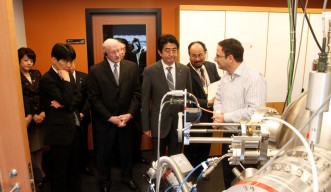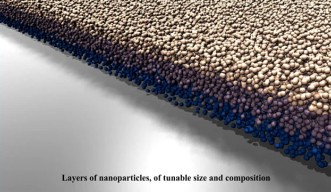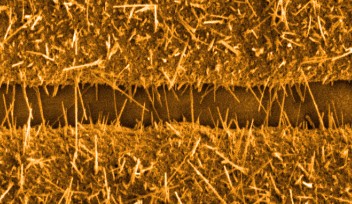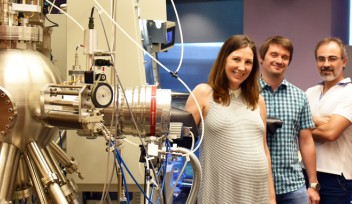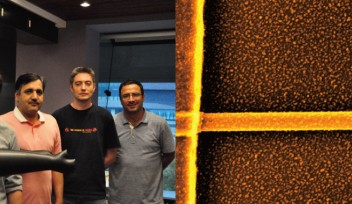Build-A-Nanoparticle
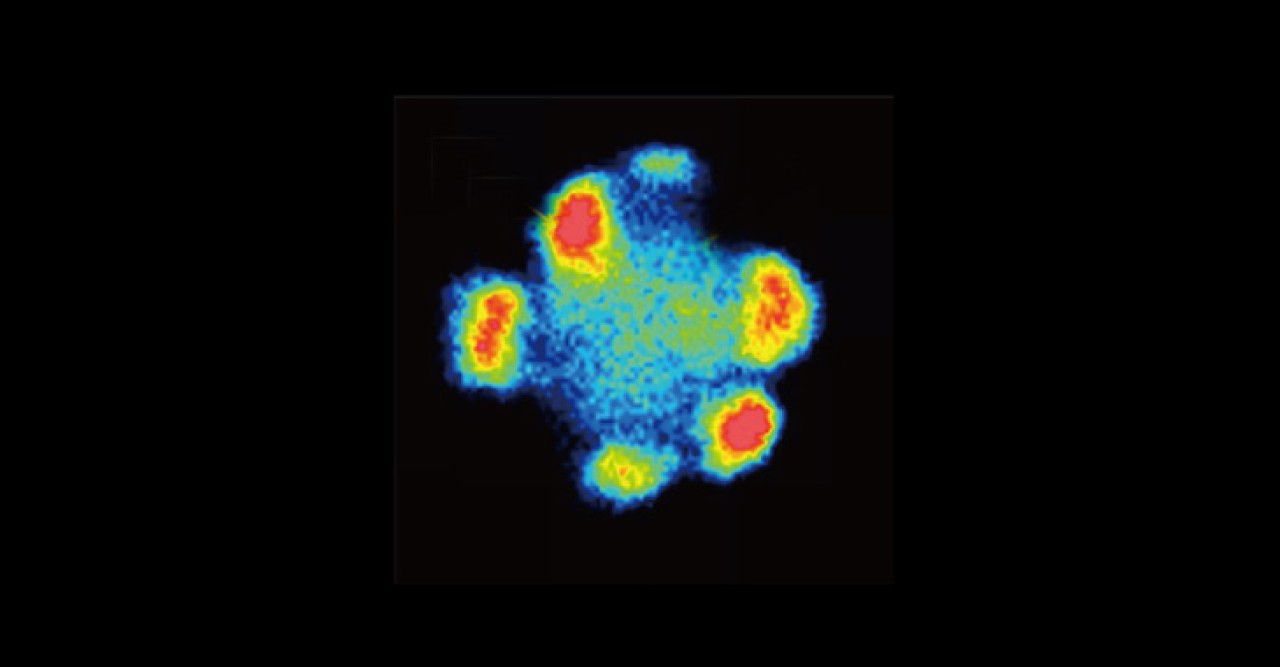
Nanoparticles, which range from 1-100 nanometers in size, are roughly the same size as biomolecules such as proteins, antibodies, and membrane receptors. Because of this size similarity, nanoparticles can mimic biomolecules and therefore have a huge potential for application in the biomedical field. In a paper published in Scientific Reports on October 30th, a group of researchers from the OIST Nanoparticles by Design Unit led by Prof. Mukhles Sowwan announced that they have succeeded in designing and creating multicomponent nanoparticles with controlled shape and structure.
Multicomponent nanoparticles, which are nanoparticles containing two or more materials, are even more powerful since they bring together the unique properties of each material to make a single nanoparticle with various functionalities. For example, a single-component nanoparticle may be able to transport drugs but may not be able to differentiate between healthy and diseased cells. In contrast, a multicomponent nanoparticle could also include characteristics of another material that can distinguish between healthy and diseased cells to make drug delivery more efficient.
The OIST researchers produced Silicon-Silver nanoparticles using advanced equipment custom-designed specifically for producing multicomponent nanoparticles. Silicon and Silver are an interesting combination because each element has different optical properties that give out different signals. A single nanoparticle simultaneously sending out multiple signals is attractive for bioimaging and biosensoring: for example, Silver would show whether a certain reaction is happening or not, while Silicon could give out information about where the nanoparticles are located.
Especially exciting is that Prof. Sowwan and his team that includes scientists from Ireland, Greece, India, United Kingdom, Peru, South Korea, Palestine, France, Spain, and Japan, can customize not only the shape and structure of the nanoparticles but also the nanoparticles’ characteristics. Engineering a particle that is 10 million times smaller than the size of a football is not easy: although nanoparticles like these have been made elsewhere in the past using different methods, they lack the level of control and purity offered at the Nanoparticles by Design Unit. With this technique, the size, structure, and crystallinity – the orderliness of atoms – of each nanoparticle can be customized. In this particular study, Sliver was used to control the crystallinity of Silicon. By controlling the crystallinity, optical, electrical, and chemical properties of the nanoparticle can be fine-tuned. “This is engineering. We control how we want the nanoparticles to be,” said Prof. Sowwan.
Specialties
For press enquiries:
Press Inquiry Form












